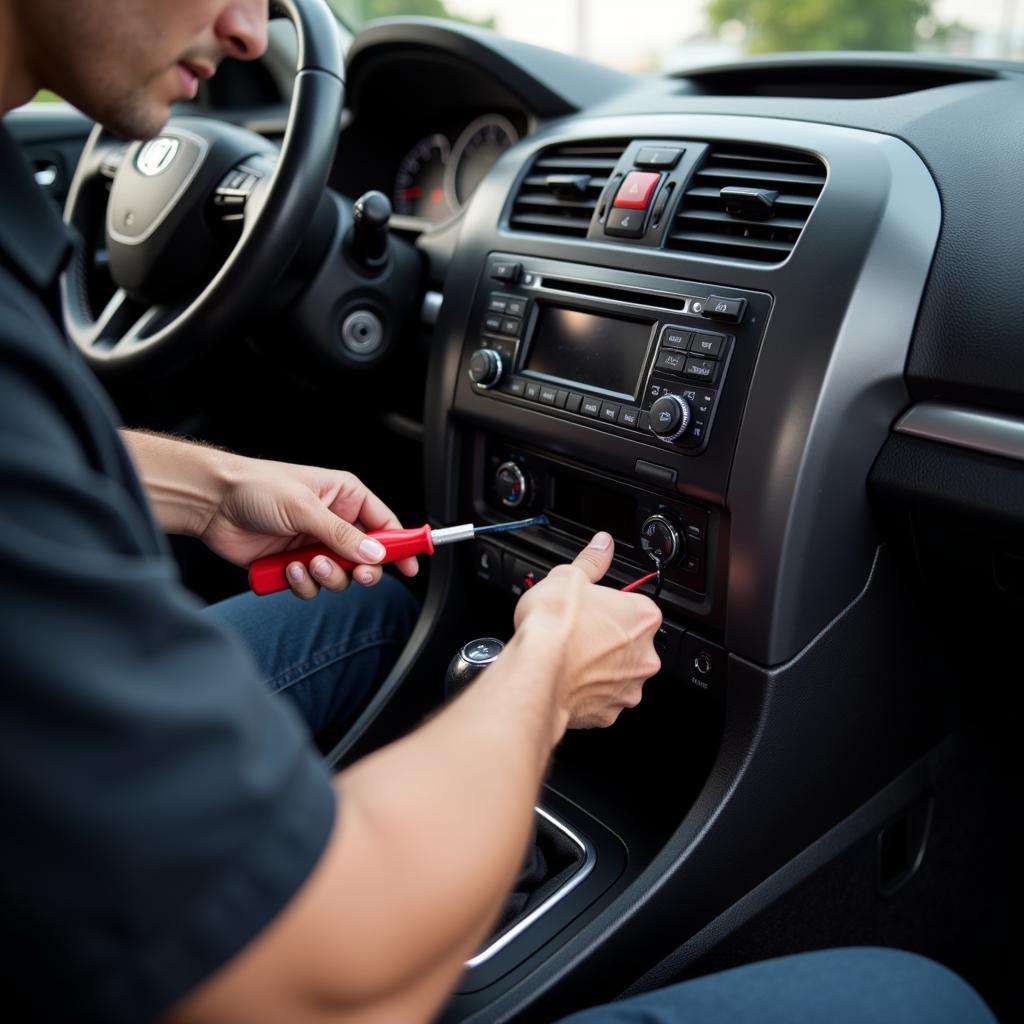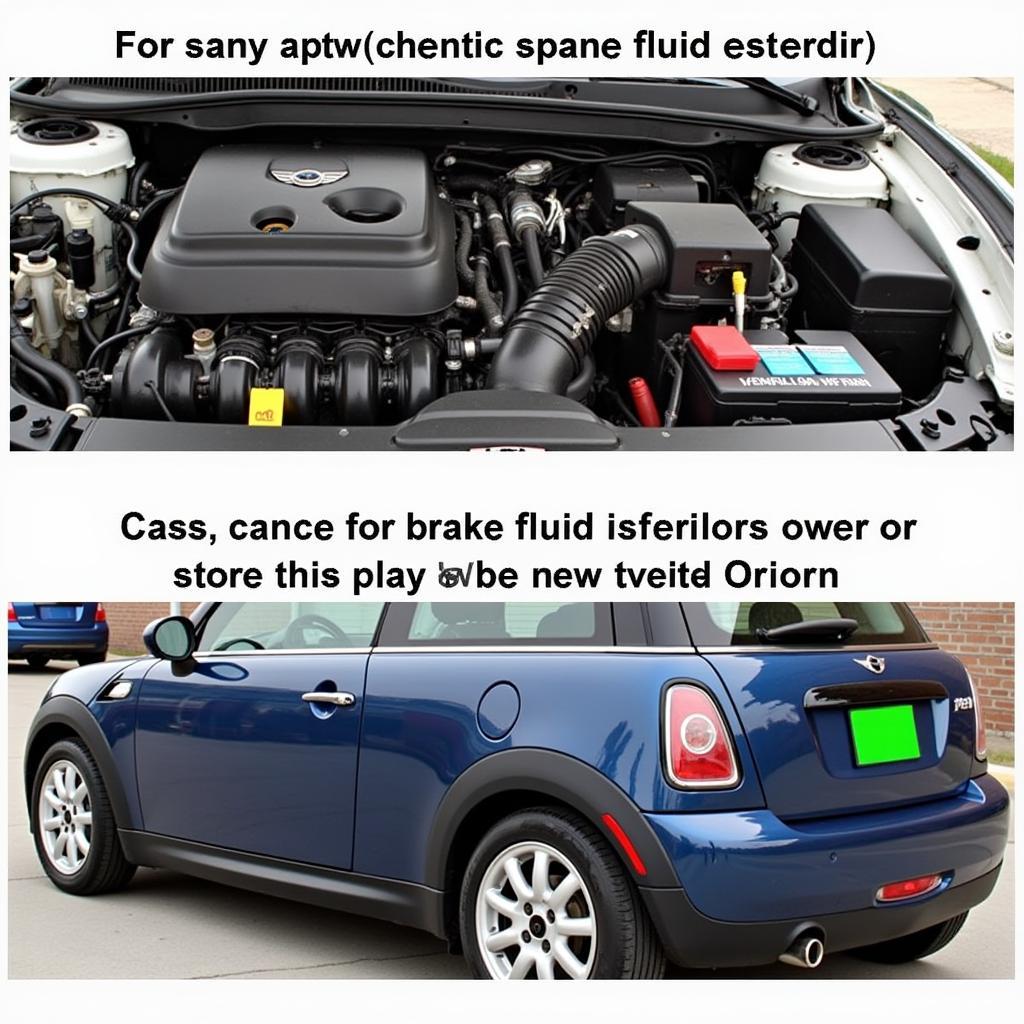If you’re a 2017 Chevrolet Tahoe owner, you might have encountered a persistent “Check Back Seat” warning, even when you’re certain the back seat is empty. This safety feature, designed to prevent children and pets from being accidentally left behind, can sometimes malfunction and cause unnecessary frustration. This comprehensive guide will walk you through various methods to diagnose and potentially fix this issue, restoring peace to your Tahoe’s dashboard.
There are several reasons why your 2017 Tahoe might be falsely triggering the “Check Back Seat” warning:
Understanding the “Check Back Seat” System
Before we delve into troubleshooting, it’s important to understand how the system works. The “Check Back Seat” warning in your 2017 Tahoe is typically triggered by rear door sensors. When you open and close a rear door, the system registers that the seat may be in use. If it doesn’t detect weight in the seat afterwards, it assumes a child or pet might be left behind and activates the warning. However, these sensors can be sensitive to changes in temperature, pressure, or even a stray bag on the seat.
Common Causes and Troubleshooting Steps
Here are some common culprits behind a false “Check Back Seat” warning and how to address them:
1. Check for Objects:
The simplest solution is often the most overlooked. Thoroughly inspect your back seat, including the floor and underneath the seats, for any objects that might be triggering the sensor. Even a small item like a water bottle or a child’s toy can be enough to activate the warning.
2. Rear Seat Reminder System Reset:
Like any electronic system, the rear seat reminder can sometimes benefit from a reset. Try this simple procedure:
- Turn on your Tahoe.
- Open and close all four doors firmly, ensuring they latch securely.
- Turn off your Tahoe.
This process can help reset the sensors and potentially resolve the issue.
3. Inspect the Seat Belts:
Make sure all rear seat belts are fully retracted and not stuck in a partially buckled position. A dangling seatbelt can sometimes be misinterpreted by the system.
4. Clean the Rear Door Sensors:
Dirt, dust, or debris can accumulate on the sensors, interfering with their accuracy. Gently clean the sensors located on the door frames using a can of compressed air or a soft, dry cloth. Avoid using any harsh chemicals or abrasive materials that could damage the sensors.
5. Check the Wiring:
While less common, a loose or damaged wire connecting the rear door sensors to the vehicle’s electrical system can also trigger the warning. If you’re comfortable with basic car maintenance, you can visually inspect the wiring harness near the door hinges for any obvious signs of damage. If you’re unsure, it’s best to consult a qualified mechanic.
When to Seek Professional Help
If the issue persists after trying these troubleshooting steps, it’s best to seek help from a certified mechanic or your Chevrolet dealership. They have the diagnostic tools and expertise to identify and address more complex problems, such as:
- Faulty Sensors: Over time, the sensors themselves can malfunction. A mechanic can test the sensors and replace any faulty ones.
- Software Glitches: Like any computer system, your Tahoe’s onboard computer can experience software glitches. A mechanic can run diagnostics and update the software if necessary.
“It’s not uncommon for car sensor systems to have occasional hiccups,” says Mark Stevenson, a senior automotive electrical engineer with over 15 years of experience. “While simple fixes often do the trick, sometimes it takes a trained eye and specialized equipment to pinpoint the root cause.”
Preventing Future False Alarms
While not all causes are preventable, here are some tips to minimize the chances of encountering the “Check Back Seat” warning unnecessarily:
- Develop a Routine: Establish a habit of double-checking your back seat before exiting your Tahoe, even if you’re certain it’s empty.
- Secure Belongings: Avoid leaving bags, groceries, or other items on the back seat, as these can trigger the sensors.
- Regular Maintenance: Keep your Tahoe’s interior clean, paying attention to the areas around the rear doors and seats.
Conclusion
The “Check Back Seat” warning in your 2017 Tahoe is a valuable safety feature, but false alarms can be frustrating. By understanding the common causes and following the troubleshooting steps outlined in this guide, you can often resolve the issue yourself. If the problem persists, don’t hesitate to consult a qualified professional. Remember, a properly functioning “Check Back Seat” system provides crucial peace of mind, ensuring the safety of your loved ones.


